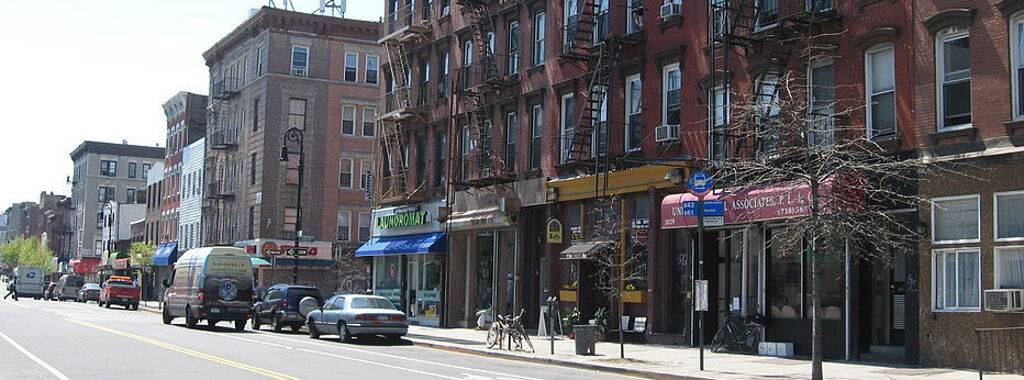I accept RentHop's
Terms of Use and
Privacy Policy

Login / Register
Save searches and listings, create email alerts, and see rent averages by neighborhood
— Or sign in with Google —
Please enter your info below

Northern Brooklyn is the northern section of Brooklyn, bordered by Queens, the East River, the Evergreen Cemetery and Central Brooklyn. It's made up of four neighborhoods: Williamsburg, East Williamsburg, Greenpoint, and Bushwick, all of which were industrial with very sparse living options. Now mostly residential, these neighborhoods are considered to be the emerging arts capital of New York.

In the last 20 years, Northern Brooklyn has undergone severe economic and cultural changes. Every neighborhood in Brooklyn has undergone dramatic transformations, but these four neighborhoods have experienced those transformations at a faster rate than most others.
Many of the abandoned factories in the area have been converted into loft apartments, businesses, and art studios/galleries. Live performance has become popular in the area as well, with many new bars and restaurants dedicating entire rooms and spaces to comedy, music, and theater. With all this in mind, it’s no wonder the area is popular amongst young creatives looking to make a name for themselves.
The subway is pretty good when it comes to access in Brooklyn, and Northern Brooklyn is no exception. There are four major lines that can land you pretty close to any destination in this area. To the north, the L train is king. To the south, the J, Z, and M trains can take you across Greenpoint, Williamsburg, Bushwick, and even a bit into Queens. The G train doesn’t go into Manhattan, but if you’re a Greenpoint resident, the G is essential in order to access other parts of Brooklyn.
Biking is also very popular in this section of Brooklyn with plenty of Citi Bike docking stations to be found here. While not many designated bike lanes are present, the streets are largely empty, making navigation easy and safety a no-brainer. The lack of traffic in this area also makes Northern Brooklyn a good area for cars and ride shares such as Uber and Lyft.
While there are certain places with nicer crime rates than Northern Brooklyn, it’s still a very safe area. Violent crime is extremely rare, with most crime being petty theft and vandalism. The emerging arts scene and night life has encouraged NYC to make these neighborhoods safe for locals and tourists, which is why the crime rate usually drops every year.
While Northern Brooklyn doesn’t have a high density of hospitals, the ones it does have are top notch and easy to access. Additionally, it’s close to Manhattan, Queens, and the rest of Brooklyn, all of which have a wide variety of hospitals for you to choose from should anything happen.
Bushwick was one of the original Dutch settlements in the 1600’s. Once the British took over in 1664, tensions began to rise between the colonists and the Empire. Brooklyn played a large role in the revolution, as the Battle of Long Island would see that New York would not be in American hands for most of the war. Once the war was won, however, Bushwick was quickly incorporated into the larger city of Brooklyn.
As more Europeans immigrated to New York in the late 19th and early 20th Century, businesses and factories began popping up in Northern Brooklyn. Germans especially migrated to East Williamsburg and Bushwick, where they built a large brewery culture, much of which still exists, even with the more modern breweries like Brooklyn Brewery on North 11th St. Around the same time, the construction of the Williamsburg Bridge in 1903, dubbed the “Jewish Expressway” brought the Lower East Side and The Bronx’s notable Jewish populations to Williamsburg.
The 1950s-80s were a time of immense poverty for the area, but the 1990s brought a big change. Manhattan was becoming expensive, and artists as well as working families sought refuge in the cheaper and calmer locations of North Williamsburg. Now the neighborhoods of Northern Brooklyn are known for their trendy atmospheres and emerging art.
| Bedrooms | Rent | Rent / sqft |
|---|---|---|
| Studio | $3,548 | $8 |
| 1 BR | $3,500 | $7 |
| 2 BR | $4,075 | $4 |
| 3 BR | $4,386 | $4 |
| 4+ BR | $4,357 | $4 |
We make sure to refresh our rental listings every hour in order to provide you with the newest and most up-to-date inventory available on the market.
Northern Brooklyn is located within Kings County, New York. This area currently has 2,606,852 residents in 938,803 households. Out of the total population, 40.12% of the residents speak another language at home instead of English. The majority of the inhabitants in this county are currently unmarried and have a median age of 35.
When looking at residents older than 25, around 25.80% have graduated from high school, 20.68% have a bachelor's degree, and 13.40% have obtained their master's degree or above. Employment rate is typically around 57.8% and the median income in this county is $50,640.
At least 70.55% of those living in this county are renting their homes. Most residents will commute to work by public transportation with an average commute time of 42 minutes.
Geographically, Kings County, New York is a part of the New York - Newark, NY - NJ - CT Urban Area. This county is currently home to 18,812,161 residents, or 6,707,347 households with a median income of $68,319. the New York - Newark, NY - NJ - CT Urban Area residents have a median age of 38 and 50.07% are currently renting their homes in the area.
